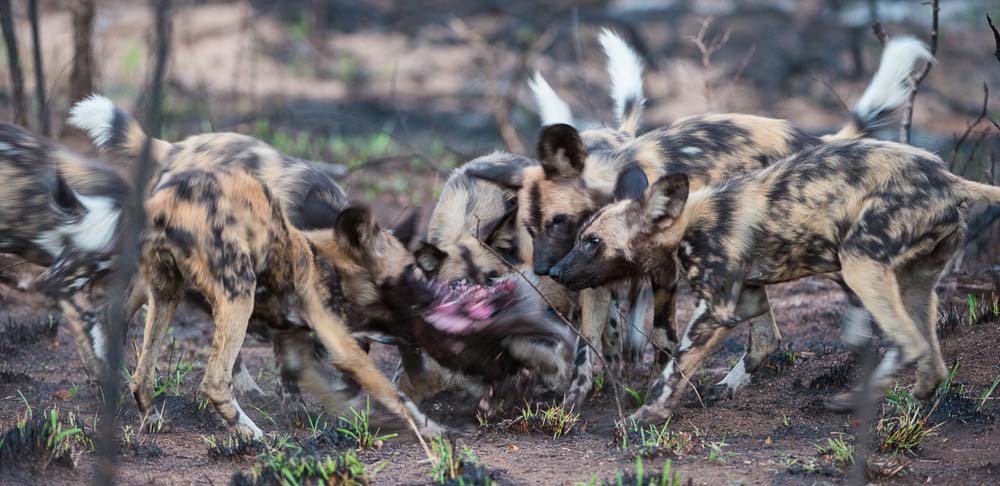wild dogs
on Mar 17, 2015Not often one of the animals on an international traveller’s checklist. Not as regal as a male lion, or as iconic as a large bull elephant wandering across the African plains. In fact we probably get 10 times more requests to see giraffe and zebra than the African Wild Dog. Why?



I put this down to two major factors, firstly it’s all in a name. Without quoting Shakespeare’s Romeo and Juliet and the Montagues and the Capulets, a Wild Dog conjures up a preconceived idea of a feral dog that lives its life scavenging in order to get by. This could not be further from the truth as they are the most effective predator on the African plains with the highest hunt to kill ratio. This is achieved by hunting together in a pack, coupled with the fact that they are endurance specialists who can run at speeds of up to 60 km per hour for a few kilometres.
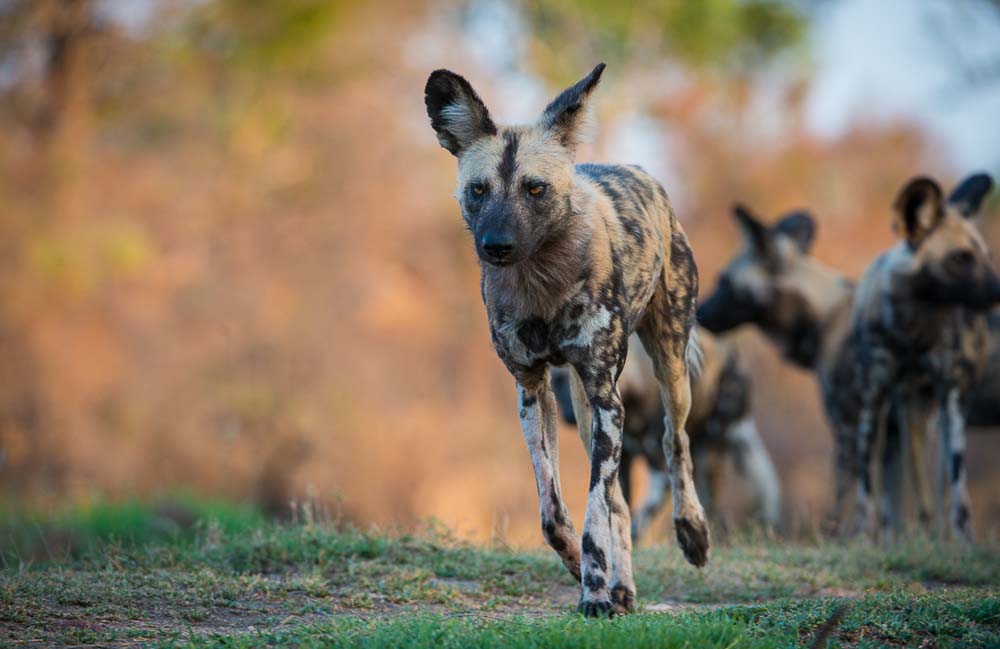
Their sinister reputation could come from the brutal nature in which they disembowel and rip apart their prey once they have been run down. This however is said to be a quicker way to die rather that the preconceived more “humane” way to die used by the cats - suffocation. Their hunting techniques have historically caused farmers and game wardens who considered them as vermin which needed to be eradicated.
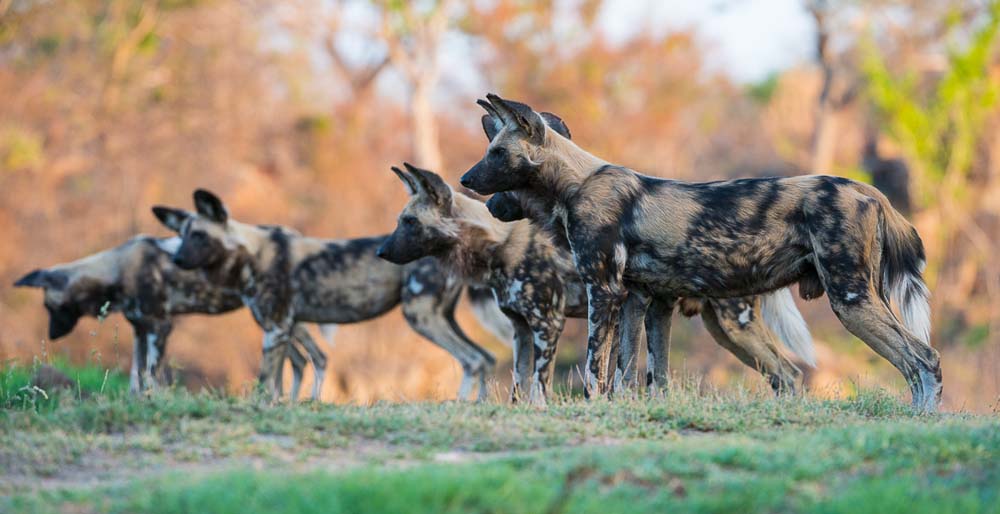
The second reason I have about why wild dogs don’t feature on an international guest’s checklist may seem a little strange. It’s the role the media play or in actual fact - don’t play in this instance. You don’t see many documentaries out there about wild dogs so no wonder there is not much awareness about these amazing creatures and their status as endangered. Please don’t get me wrong, I’m not having a go at film makers because these creatures are notoriously difficult to track, keep up with and film or photograph closely coupled by their small numbers. I am just referring to the public’s general awareness here.
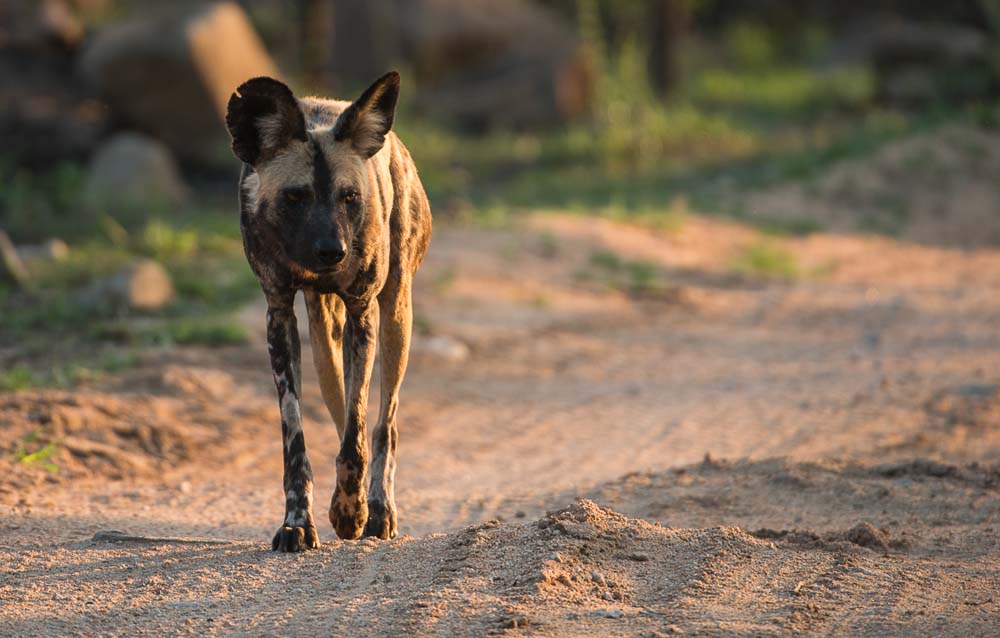
Second only to the Ethiopian Wolf, The wild dog is one of Africa’s most endangered predators and their low numbers are put down to their persecution, diseases like rabies and canine distemper, and habitat loss. These nomadic predators don’t hold territories but roam home ranges which often need to be in excess of 450 square kilometres in order to support a pack which averages between 10-15 dogs but also as many as 30 in a pack. The only time that they settle is when they den, which is for 3 months between May and July. These are the dryer months in Southern Africa and make for more open vegetation and a greater chance of hunting success due to some species losing condition due to the lack of water.
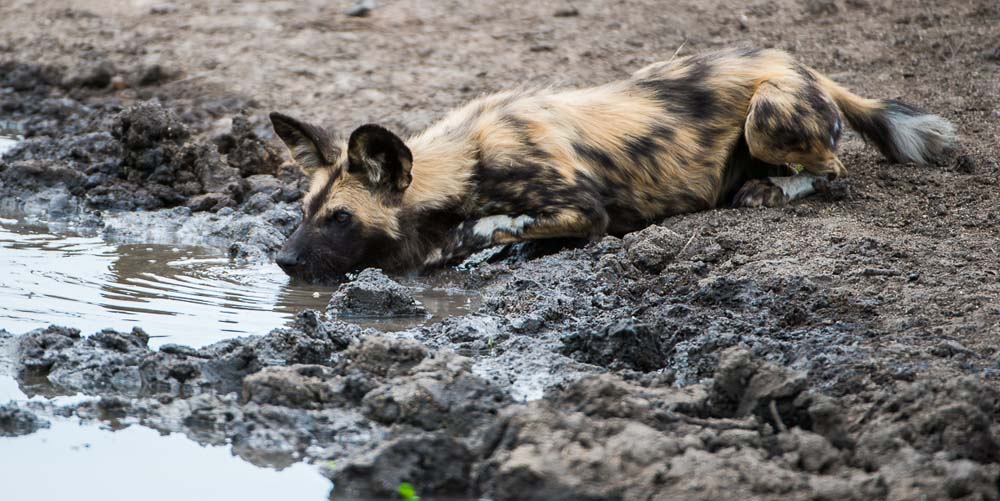
The lack of fences within in the Sabi Sands, has allowed these wild dogs to flourish and roam their home ranges in search of their much needed food and no animal creates as much as excitement amongst the Rangers as a wild dog sighting. I was very fortunate last cycle to find and follow a pack for two and a half hours which culminated in them killing a Grey Duiker - not for the faint hearted but truly amazing. The highlight for myself and our guests was seeing how social these animals are, when the adult hunting pack returned to some of the pups, the giggling and social bonding was incredible. There is even one pup in the pack that has a broken ankle, near fatal for a solitary hunter but he keeps up with the pack and the family looks after him despite his inability to participate in a hunt. As humans we can learn a lot from these amazing creatures.
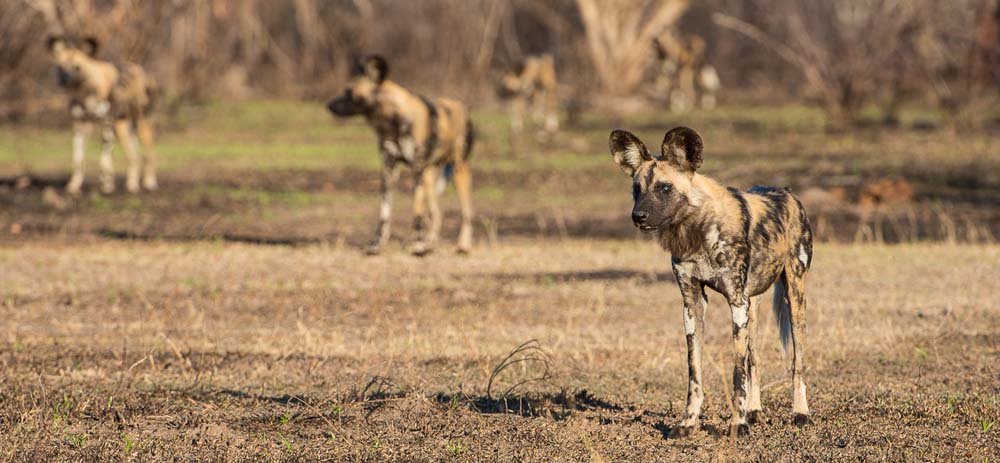
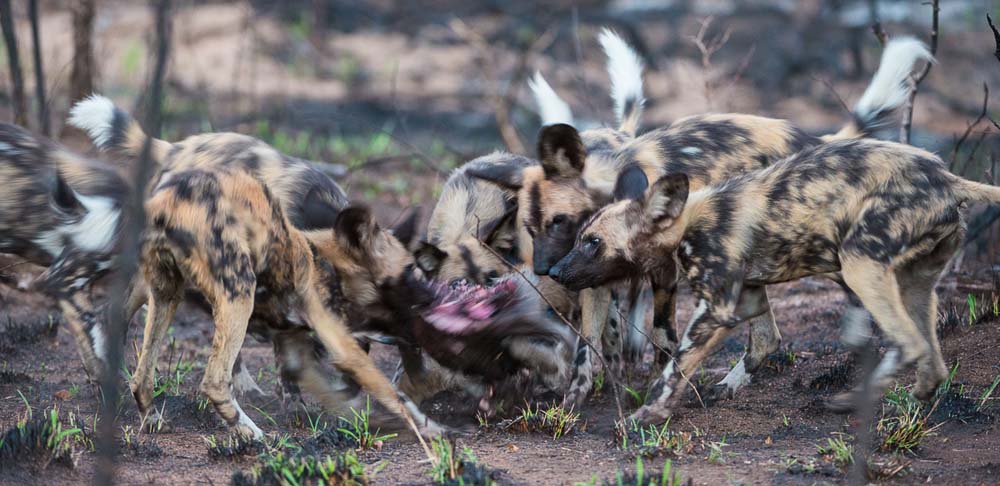
Lycaon pitus - the scientific name of the Wild Dog, meaning painted wolf with each dog having its own unique pattern. Whatever your pre conceived notion is about this predator, spending time with these creatures makes you appreciate that they are indeed, works of art.
